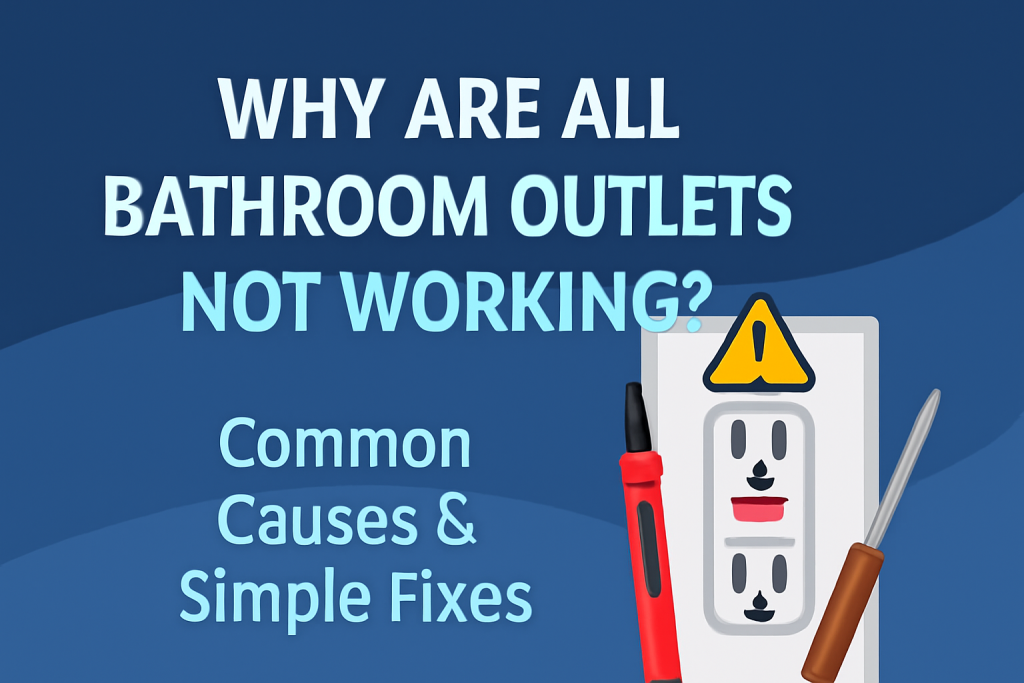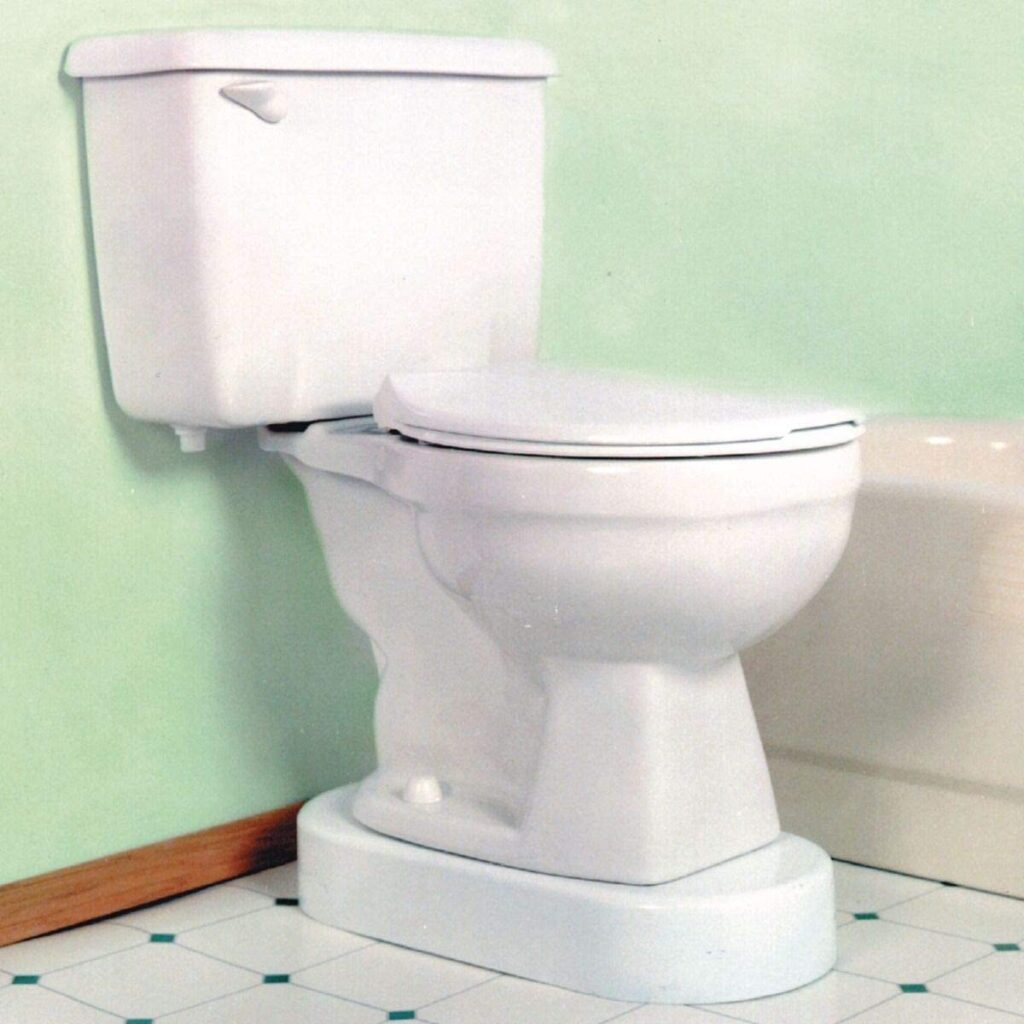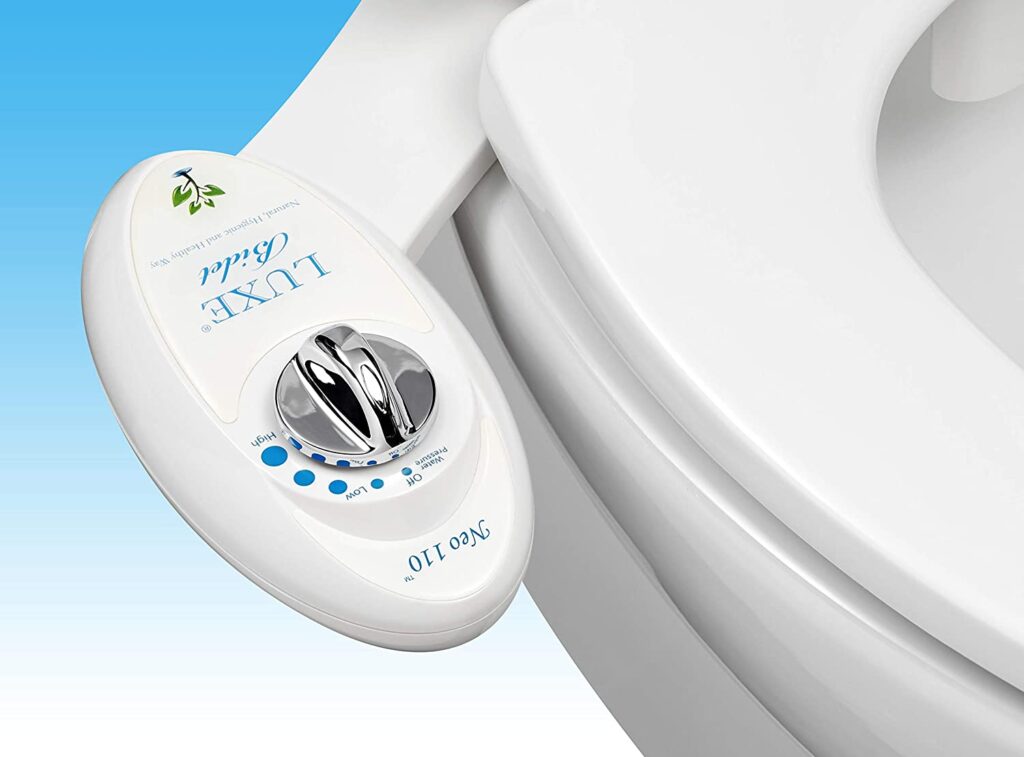 It’s a frustrating experience when all your bathroom outlets suddenly stop working. Whether you’re trying to plug in your hair dryer or charge your phone, a non-functioning outlet can bring daily routines to a halt. This issue might seem serious, but the good news is that many times, it’s a simple problem that can be fixed without a professional.
It’s a frustrating experience when all your bathroom outlets suddenly stop working. Whether you’re trying to plug in your hair dryer or charge your phone, a non-functioning outlet can bring daily routines to a halt. This issue might seem serious, but the good news is that many times, it’s a simple problem that can be fixed without a professional.
Addressing this problem promptly is important not only for your convenience but also for your safety. Electrical issues can sometimes indicate bigger problems, so it’s best to resolve them quickly. Fortunately, most bathroom outlet issues can be solved with basic troubleshooting, saving you time and money.
Table of Contents
Possible Causes of the Problem
1. Tripped Circuit Breaker
What is a Circuit Breaker?
A circuit breaker is a device that automatically shuts off the flow of electricity in a circuit when it detects an overload or short circuit. It’s like a safety switch that prevents your electrical system from being damaged or starting a fire due to excessive power.
Why it Trips
Circuit breakers are designed to trip for a few reasons:
-
Overload: Too many appliances plugged into the same circuit can cause the breaker to trip.
-
Short Circuit: This happens when the hot wire touches the neutral wire, causing a surge of electricity.
-
Faulty Wiring: Damaged or loose wires can trigger the breaker to trip to protect the system.
Solution:
-
How to Check and Reset the Circuit Breaker
-
Head to your electrical panel.
-
Locate the breaker that powers your bathroom outlets. It may be labeled.
-
Check if the breaker is in the “off” position. If it is, flip it back to “on.”
-
If the breaker flips again immediately, there may be a serious issue that requires professional help.
-
2. GFCI Outlet Issues
What is a GFCI Outlet?
A GFCI (Ground Fault Circuit Interrupter) outlet is designed to prevent electric shock by quickly shutting off the power when it detects a difference between the hot and neutral wires. These are especially important in bathrooms, where water can increase the risk of electrical accidents.
Purpose of GFCI Outlets in Bathrooms
GFCI outlets are required in bathrooms due to the high moisture content in these areas. They ensure that if water comes into contact with the electrical system, it will cut off the power immediately, reducing the risk of electrocution.
Why GFCIs Stop Working
GFCI outlets can stop working for several reasons:
-
Testing Mode: Sometimes the outlet will trip after being tested or checked.
-
Damage: Over time, GFCI outlets can wear out due to electrical surges or aging.
-
Malfunction: Internal components can fail, causing the outlet to lose power.
Solution:
-
How to Reset the GFCI Outlet
-
Find the “reset” button on the outlet.
-
Press it firmly to reset the outlet.
-
If the outlet does not reset or trips again, it may need to be replaced or repaired.
-
3. Faulty Wiring
Possible Wiring Problems
Faulty wiring is a common cause of electrical issues, and it can be dangerous. The wiring in your bathroom outlets may have problems such as:
-
Loose Connections: Wires that aren’t securely attached to the outlet or breaker can cause intermittent power or sparks.
-
Corrosion: Over time, moisture or poor-quality materials can cause corrosion in the wiring.
-
Wear and Tear: Wiring that’s old or damaged can cause malfunctioning outlets and pose a fire hazard.
How to Identify Faulty Wiring
It’s not always easy to spot faulty wiring, but some signs include:
-
Sparking: If you see sparks when plugging in devices.
-
Flickering Lights: If your bathroom lights flicker or dim unexpectedly when the outlet is in use.
-
Burning Smell: A burnt odor may indicate overheating wires or components.
Solution:
-
How to Address Wiring Issues Safely
Working with electrical wiring can be dangerous. If you notice any of the above signs or if the outlet isn’t working despite troubleshooting, it’s best to call a licensed electrician. They can safely diagnose and repair faulty wiring, ensuring that your bathroom outlets are functioning correctly without risking harm.
4. Overloaded Circuits
What is an Overloaded Circuit?
An overloaded circuit occurs when too many electrical devices are plugged into the same circuit, exceeding its power capacity. Every circuit is designed to handle a specific amount of electrical load, and when that limit is surpassed, it can cause the circuit to trip or fail.
How Multiple Appliances Might Overload the Circuit
In bathrooms, you might plug in devices like a hairdryer, straightener, electric razor, or even a space heater. If these devices are plugged into the same circuit, they can quickly exceed the circuit’s power rating, especially if they’re all being used at the same time. This overload forces the circuit to shut down to prevent overheating, electrical fires, or damage to appliances.
Solution:
-
Distribute the Load Across Other Outlets or Reset the Breaker
-
Try to unplug multiple devices from the same outlet.
-
Use outlets in different rooms to distribute the load more evenly across the circuit.
-
If the breaker has tripped due to the overload, locate your electrical panel and reset the breaker by flipping it back to the “on” position.
-
Consider spreading high-power devices across multiple circuits to avoid overloading.
-
5. Blown Fuse
What is a Blown Fuse?
A blown fuse is a safety device in your electrical system designed to protect against overcurrent. The fuse contains a metal wire that melts if the current exceeds the safe limit, interrupting the flow of electricity. This prevents overheating and potential damage to electrical components.
Explanation of How Fuses Protect Your Electrical System
Fuses are used to safeguard both your appliances and wiring. If a fuse blows, it indicates that too much electrical current has passed through, either because of a short circuit or a faulty appliance. The blown fuse ensures the system doesn’t suffer more serious damage, such as fires or component failures.
Why It Happens
-
Short Circuits: When the hot and neutral wires touch each other, causing a surge of electricity.
-
Power Surges: A sudden increase in power, often from external sources, like lightning or power grid issues.
-
Faulty Appliances: If an appliance malfunctions and draws too much current, it can blow the fuse.
Solution:
-
How to Replace a Blown Fuse
-
Turn off the power to your home to prevent electric shock.
-
Open the electrical panel and locate the blown fuse.
-
Remove the blown fuse and replace it with a new one that has the same amperage rating.
-
If the fuse blows again immediately, this could indicate a more serious electrical problem, and you should consult an electrician.
-
6. Malfunctioning Outlet
What is a Faulty Outlet?
A faulty outlet refers to any electrical outlet that no longer functions as intended. Over time, the internal components of outlets can wear out or get damaged. This can lead to inconsistent power flow or complete failure to provide electricity.
Signs of Wear or Internal Damage to the Outlet
-
Sparking: If you notice sparks when plugging in or unplugging devices, it could be a sign of damage to the outlet’s wiring or internal components.
-
Burn Marks: Discoloration around the outlet may indicate overheating or arcing.
-
Loose Connections: If plugs don’t stay in place or fall out easily, the internal wiring may be loose or disconnected.
Why Outlets Fail
-
Old Age: Over time, the components in outlets wear out due to regular use.
-
Loose Connections: Poor connections between the outlet terminals and wiring can cause an intermittent power supply.
-
Broken Components: Internal components such as the contacts or the spring mechanism can break, rendering the outlet useless.
Solution:
-
Replacing or Repairing the Outlet
-
Turn off the power at the breaker before working on the outlet.
-
Remove the outlet cover and check the connections for any loose or damaged wires.
-
If the outlet is damaged, replace it with a new one that is appropriately rated for your circuit.
-
For complex issues, or if you’re unsure about handling electrical components, it’s safest to call an electrician for a proper repair or replacement.
-
7. Main Electrical Panel Issue
What is a Main Panel Problem?
Your main electrical panel is the heart of your home’s electrical system, where all circuits are connected. If there’s a problem in the panel, it can affect the functionality of the entire circuit, including the bathroom outlets.
Why It Happens
-
Faulty Panel: The electrical panel itself might be malfunctioning due to old age or wear, leading to poor distribution of power.
-
Breaker Problems: Sometimes, individual breakers in the panel become faulty or fail to provide the correct protection for circuits.
-
Electrical Damage: Over time, electrical components in the panel can corrode or become damaged, affecting the reliability of the entire system.
Solution:
-
Inspecting the Panel, and When to Consult an Electrician
-
Inspect the panel for any visible damage or burnt wires.
-
Check the breakers for any signs of malfunction, such as tripping frequently or not staying in the “on” position.
-
If you suspect issues within the main panel, it’s essential to contact a licensed electrician immediately. Working on the electrical panel is complex and dangerous for non-professionals.
-
Troubleshooting Steps
Step-by-Step Guide:
-
Turn Off the Power to the Bathroom
-
The first and most important step is to ensure your safety. Turn off the power to the bathroom from the circuit breaker to avoid any electrical accidents while troubleshooting.
-
-
Check if the Breaker Has Tripped
-
Go to your electrical panel and check if the circuit breaker for the bathroom has tripped. If the breaker is in the “off” position, flip it back to “on” and check if the outlets start working.
-
-
Inspect the GFCI Outlet for a Tripped Switch
-
Bathroom outlets are often connected to a GFCI outlet, which is designed to shut off power if it detects a fault. Look for the reset button on the GFCI and press it to restore power.
-
-
Test Each Outlet Using a Voltage Tester
-
Use a voltage tester to check if there is any power running through the outlets. This can help identify whether the problem is isolated to a specific outlet or if it’s a larger electrical issue.
-
-
Reset the Circuit Breaker or Replace a Blown Fuse
-
If you identified a tripped breaker, reset it as needed. If the circuit is protected by a fuse, check for any blown fuses and replace them if necessary.
-
Tools You May Need:
-
Voltage Tester: To check if there is power running through the outlets.
-
Screwdriver: To open outlet covers or remove electrical components.
-
Pliers: For handling wires or other small components that need adjusting or replacing.
Safety Tips:
-
Always Turn Off the Power Before Working with Electrical Components
-
Before performing any electrical work, make sure to turn off the power at the breaker to prevent electric shock.
-
-
Wear Protective Gear: Consider wearing rubber-soled shoes and gloves to further protect yourself.
-
Don’t Overload Outlets: Avoid using multiple high-power devices simultaneously on the same outlet to reduce the risk of overload.
What to Do if Your Outlet is Still Not Working
Try Different Combinations:
-
Test Another Outlet or Appliance:
-
If one bathroom outlet isn’t working, try plugging a working appliance into another outlet in the bathroom or even in another room. This can help you determine if the issue is isolated to a specific outlet or if it’s part of a larger electrical problem.
-
Use an Alternative Power Source:
-
Temporary Workaround:
-
If the issue persists, you can temporarily use an outlet in another room until the problem is fixed. This will allow you to use your devices while waiting for the issue to be resolved.
-
When to Call a Professional
Signs You Need Professional Help:
-
Electrical Burns: If you notice burn marks or a burnt smell near your outlets, it’s crucial to call an electrician immediately.
-
Repeated Breaker Trips: If your circuit breaker keeps tripping or cannot be reset, it could indicate a serious underlying issue that requires professional attention.
-
Strong Electrical Smells: Any burning or unusual smells from the electrical system are a clear sign that something is wrong and could be dangerous.
Why You Shouldn’t Attempt Advanced Repairs:
-
The Risks of Working with Electricity: Electricity can be hazardous, and handling electrical components without proper knowledge can lead to injury, electrocution, or even fires.
-
Importance of Licensing: A licensed electrician has the training and experience to safely handle complex electrical issues, ensuring that your system is repaired correctly and meets local code requirements.
How to Find a Licensed Electrician:
-
Check Reviews and References: Look for electricians with positive reviews and recommendations from trusted sources.
-
Ensure Proper Certifications and Licensing: Verify that the electrician holds the proper certifications and licenses to perform work in your area.
-
Get Multiple Estimates: It’s a good idea to get estimates from a few professionals to ensure you’re getting a fair price and quality work.
Preventing Future Bathroom Outlet Problems
Regular Maintenance Tips:
-
Clean Your Outlets Regularly: Dust and debris can build up in outlets over time, which may lead to overheating or malfunction. Use a dry cloth to wipe around the outlet covers and keep them clean.
-
Inspect Wires Periodically: If you notice fraying wires or exposed copper in your outlets, it’s a sign that the wiring needs attention. Look for loose connections, corrosion, or any signs of wear, especially if the outlets are old.
-
Check the GFCI Reset: Regularly test your GFCI outlets by pressing the “test” and “reset” buttons to make sure they are functioning properly and protecting against ground faults.
Upgrading Your Electrical System:
-
When to Consider Replacing Old Wiring: Over time, older homes may have outdated wiring that can’t handle modern electrical demands. If your bathroom outlets are frequently tripping, or if they are not compatible with newer appliances, it might be time to upgrade the wiring to support more power.
-
Install New Outlets for Better Efficiency: If your bathroom outlets are old or have issues, installing new, safer outlets can improve the functionality and safety of your electrical system. Consider upgrading to USB outlets for convenience and tamper-resistant outlets for added safety, especially if you have young children in the home.
Surge Protectors:
-
How Surge Protectors Can Prevent Power Surges from Damaging Your Outlets: Power surges can damage your appliances and electrical system. Installing surge protectors for devices like hair dryers, electric razors, and space heaters can help protect them from sudden spikes in electricity. These devices help absorb excess voltage, ensuring your outlets and appliances remain safe.
Conclusion
In this article, we explored common reasons why all bathroom outlets might stop working, including tripped circuit breakers, GFCI issues, faulty wiring, and overloaded circuits. We also discussed simple solutions to these problems that you can try yourself, such as resetting breakers or replacing a blown fuse.
Remember, most bathroom outlet issues can be solved with basic troubleshooting. However, if you’re unsure or dealing with more complex electrical problems, don’t hesitate to seek professional assistance from a licensed electrician.
Electrical problems can often be fixed quickly, but your safety is the priority. Always exercise caution and, when in doubt, leave the work to the experts.
Frequently Asked Questions (FAQs)
1. What should I do if none of my bathroom outlets are working?
-
Start by checking the circuit breaker and resetting it if necessary. If that doesn’t solve the issue, check the GFCI outlet for a tripped switch. If these don’t work, you may need to inspect the wiring or consult an electrician.
2. How do I know if my circuit breaker has tripped?
-
A tripped breaker will be in the “off” position or in the middle. You can reset it by flipping it back to the “on” position. If it trips again immediately, there may be an underlying issue.
3. Can a blown fuse cause multiple outlets to stop working?
-
Yes, a blown fuse can cause an entire circuit or multiple outlets on that circuit to stop working. Replace the blown fuse to restore power.
4. How often should I replace or upgrade my bathroom outlets?
-
If your outlets are old, damaged, or frequently malfunctioning, it’s a good idea to replace them. Consider upgrading your electrical system if you have an older home with outdated wiring.
5. Are surge protectors necessary in bathrooms?
-
While not required, surge protectors can help prevent damage to sensitive electronics or appliances in the event of a power surge. It’s a good investment for safety and appliance longevity.






